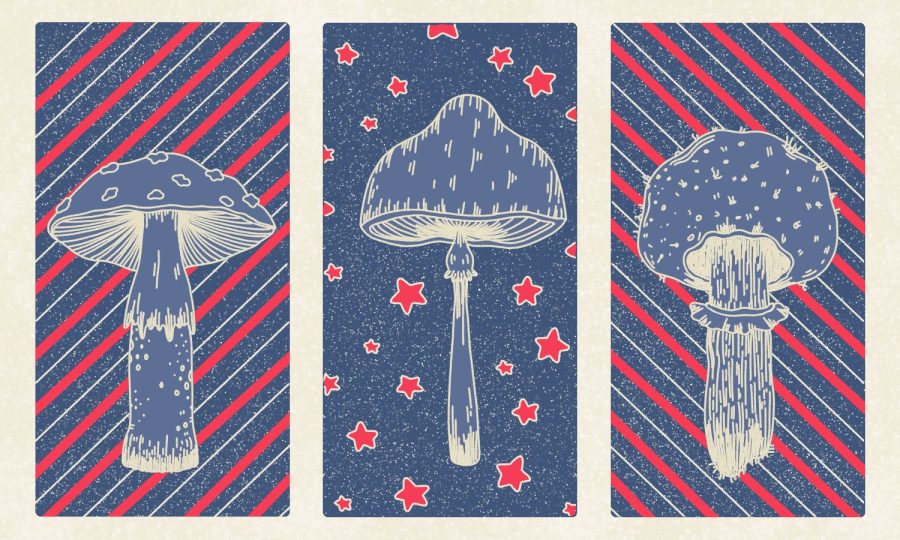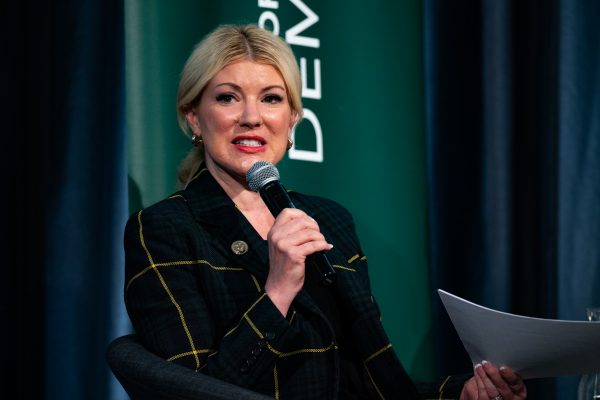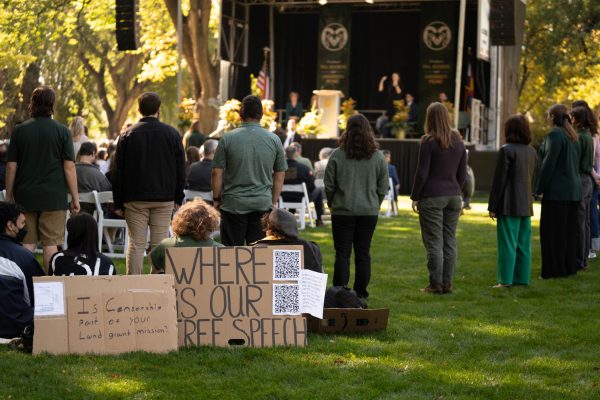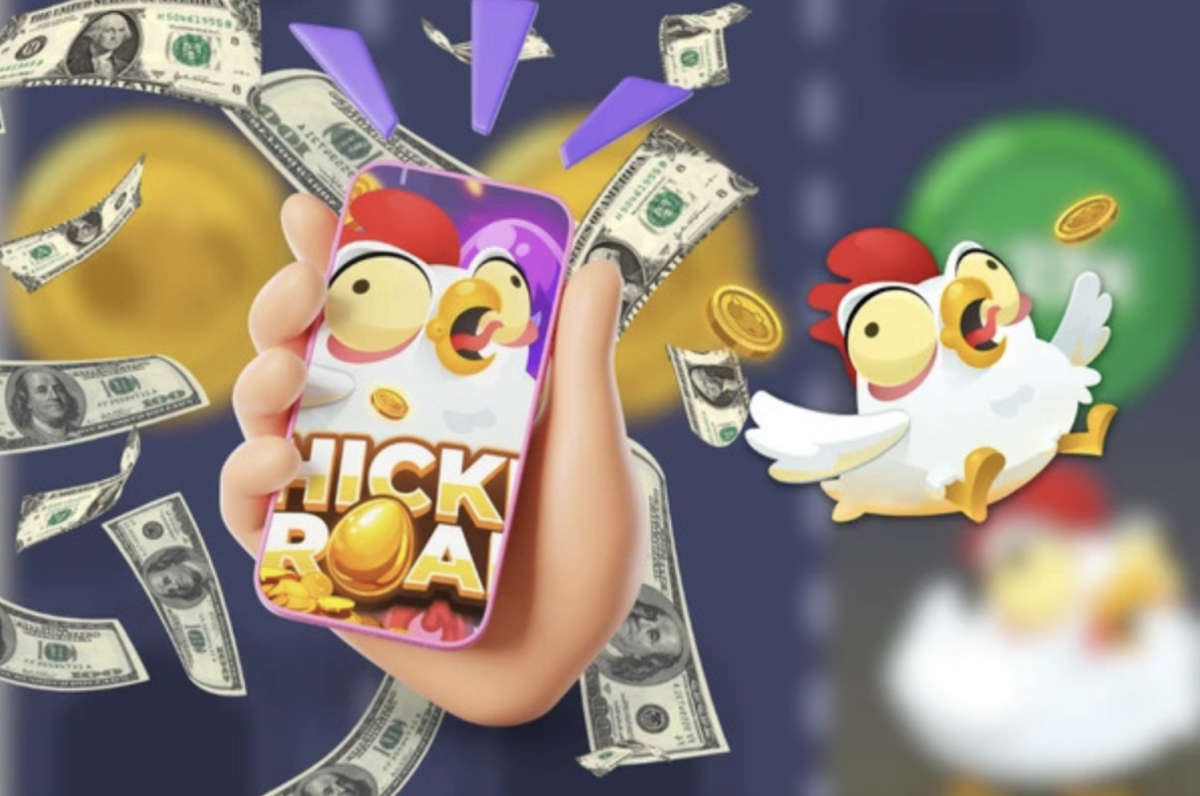Mushrooms, addiction treatment on the ballot
Cannabis is not the only Schedule I drug being rethought.
Collegian | Trin Bonner
October 18, 2022
Colorado voters in November will be voting on the Natural Medicine Health Act of 2022 as Proposition 122, which would legalize the therapeutic use of naturally occurring hallucinogens.
Outside of medical use, the drugs would only be decriminalized for recreational use, so you won’t be able to go to the dispensary and load up on mushrooms. Legal access to the drugs would also be reserved for therapeutic uses, namely for treating conditions such as PTSD, addiction and depression.
There is more to shrooms than floating off to “The Dark Side of the Moon” at a laser light show. Recent evidence has suggested that psilocybin, the active compound in magic mushrooms, along with other psychedelics such as LSD and mescaline, can be effective when combined with psychotherapy in treating psychological conditions previously thought untreatable.
Under current law, these drugs are classified as Schedule I narcotics, meaning they don’t have any recognized medicinal use, but they do have a high potential for abuse. This is not that different from cannabis, which shares the same Schedule I classification.
“Therapy is impactful in treating addictions, and psilocybin in combination with said therapy increases the efficacy of quitting over a short or long period.”
The ballot initiative is not unprecedented. In 2019, Denver decriminalized the possession and use of psilocybin, and Oregon legalized similar treatments to those in Proposition 122 in 2020.
Among other studies on various psychological conditions, there are a few addiction treatment studies worth digging into: one in 2018 with patients addicted to nicotine and a 2022 study with patients suffering from alcohol use disorder.
In the nicotine study, nine out of 15 patients were biologically confirmed to have been nicotine free in a long-term follow-up (roughly 30 months after psilocybin treatments). That’s a success rate of 60%, whereas regularly prescribed smoking addiction treatments have a success rate of 35% or less six months and beyond.
Meanwhile, the alcohol use disorder study found that participants who received psilocybin reduced their heavy drinking days significantly compared with the placebo group.
While the mechanisms for this new type of treatment are not well understood, the results are promising. Both studies involved weeks of therapy with patients before, during and after the administration of the drug.
Eleven out of 12 participants who completed the long-term follow-up interview in the nicotine study successfully quit smoking after their target quit date and their first experience with psilocybin.
These 11 also reported reductions in cigarette withdrawal symptoms compared to their previous quitting attempts along with “profound insights into their self-identity or smoking behavior,” the analysis said. Only one participant did not have reduced withdrawal symptoms and relapsed multiple times before his second session.
Principal investigator of the study Tehseen Noorani said about the reduced withdrawal and craving symptoms: “It’s kind of just happening, just automatically, and so the participants themselves are a bit perplexed, like it just didn’t feel to be connected to some insight.”
Similarly, encouraging results were found in the alcohol use disorder study. For those who underwent psilocybin-assisted therapy, their percentage of heavy drinking days (characterized as five or more drinks for men and four or more for women) was reduced from an average of 57.2% of days to 9.71%.
The control group, with the assistance of just therapy and the placebo diphenhydramine, which is used in allergy medicines, reduced their heavy drinking days from 47.93% to 23.57%. That’s a difference of 13.9% between the placebo and psilocybin groups.
Both studies show two major results: Therapy is impactful in treating addictions, and psilocybin in combination with said therapy increases the efficacy of quitting over a short or long period.
There are some problems with these studies, however.
“I would say that the biggest limitation of (the nicotine study) is probably just the small sample size, as it was only 12 people,” Noorani said. “It would have been nice to have had a broader range of people.”
In the nicotine study, they noticed in the interviews that patients felt a connection to their guides during their psilocybin sessions, making the role of the guide an uncontrolled variable.
“For some, it wasn’t even about the session so much; it was the depth of intimacy and rapport with their studying team and the connection they had with people,” Noorani said. “I remember one person saying it was stronger or even closer than the connection he had with his wife.”
Meanwhile, the alcohol use disorder study was potentially plagued with bias from patients. There is no real placebo for psychedelics, so patients receiving either medication were acutely aware of their status and thus could have been biased.
“In the field at the moment, there’s a bit of a debate as to whether you even bother trying to come up with a placebo that’s going to get unblinded or not,” Noorani said.
Even with those problems in mind, these results should not be ignored. Addiction is an issue that does not have a consistent cure available, so while some people will be assisted with more traditional treatment processes, others will continue to suffer.
These studies are at the forefront of research into psychedelics and as such are primitive. One of the main conclusions of both studies is the need for further research.
Colorado voters will have the ultimate choice in November if these treatments will become available to adults over 21.
Reach Grayson Acri at cannabis@collegian.com or on Twitter @Guy1376.







